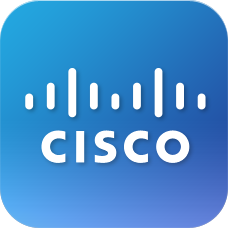Inbound Call Processing
- For a new call coming into the queue, the wait time is not set.
- For a call that is transferred to the queue from another queue within the group/enterprise or an agent, the wait time accumulated by the call prior to being transferred is preserved (if the option to preserve the wait time is enabled) and the call is queued accordingly.
Various actions can be taken to manage a call present in a queue such as reordering a call to the front of the queue, promoting a lower priority call to a higher priority, transferring a call, and so on.
In addition, calls are routed to agents staffing the call center as and when they are available. Calls can be routed to an available agent based on various routing policies.
The following subsections provide more information on queue management and routing policies.
Queue Management
Bounced Calls
- If a call offered to an agent is not answered by the agent, the call is returned back to the queue and is flagged as “bounced”. This call is prioritized ahead of other non-bounced calls in the queue. A bounced call always remains at the top of the queue.
- If there are multiple bounced calls in the queue, then they are prioritized based on the original time at which the call was offered to an agent. The bounced call flag is only relevant within the queue in which the call has bounced. If the bounced call is transferred to another queue, then the flag is cleared and the call is prioritized as a regular call.
Reordering Calls
Calls present in a call center queue, can be reordered by the supervisor. Reordering can be performed only on calls at the highest priority. Calls in lower priority buckets cannot be reordered. This is to ensure accurate promotion of calls to the next priority.
Transferring Calls
Calls can be transferred from one call center to another. The supervisor can transfer a call using the AVAD Technologies Supervisor client.
Promoting Calls
To avoid lower priority calls from being stranded, options are available to promote lower priority calls present in the queue for a long duration to higher priority.
Offering Calls to Agent
A queued call is offered to an agent upon one of the following triggers:
- Upon entry in the queue and at least one agent is available to answer the call. In this case, the queued call is offered to an available agent according to the Call Distribution policy configured for that queue.
- An agent becomes available to handle a new call and the queued call is prioritized as the next call to be
- offered. In this case, the call is first offered to the agent who becomes available. If the call bounces or the agent becomes unavailable again before the call can be offered, then the call is offered according to the Call Distribution policy configured for that queue.
Routing Policies
Priority Routing
This activity introduces a policy that allows the determination of which call is to be delivered in priority when an agent becomes available.
The Priority Routing policy has two settings
- Longest Waiting Priority: If this setting is selected, then the wait times of the next call in line from each queue that the agent is staffing are compared. The longest waiting call is selected and delivered to the agent.
- Fixed Queue Priority: If this setting is selected, then a list of precedence is configured among the queues of the group/enterprise. The call from the highest precedence queue that the agent is staffing is selected and delivered to the agent.
For both settings, bounced calls always have priority over non-bounced calls. If there is more than one bounced call, then they are prioritized based on the original time at which the call was offered to an agent.
This ensures that in a scenario in which an agent is staffing more than one queue and becomes available to take a new call, all queues do not trigger and attempt to “de-queue” and send a call to the agent at the same time.
This policy is configured at the group/enterprise level
Skill-Based Routing
In Premium call centers, skill-based routing may be provisioned at the call center level. Agents in these call centers are assigned a skill level (1-20, with 1 the highest) to indicate their ability to handle calls in that call center.
If one or more call centers in a group/enterprise is skill-based, the routing policy for the group/enterprise is also said to be “skill-based”. In this case, call centers that are not explicitly defined as skill-based are considered to have all assigned agents at skill level 1 (the highest). Therefore, if an agent belongs to both skill-based and non-skill-based queues, his skill level is assumed to be 1 (highest) in the non-skill-based queues.
Like priority-based queues, if calls are queued on multiple call centers and an agent becomes available, bounced calls take precedence. If no bounced calls are queued, the agent’s skill level in each queue is examined; a call from the queue where the agent is most skilled is delivered. If the agent is equally skilled in more than one call center, the priority routing policy is applied.





